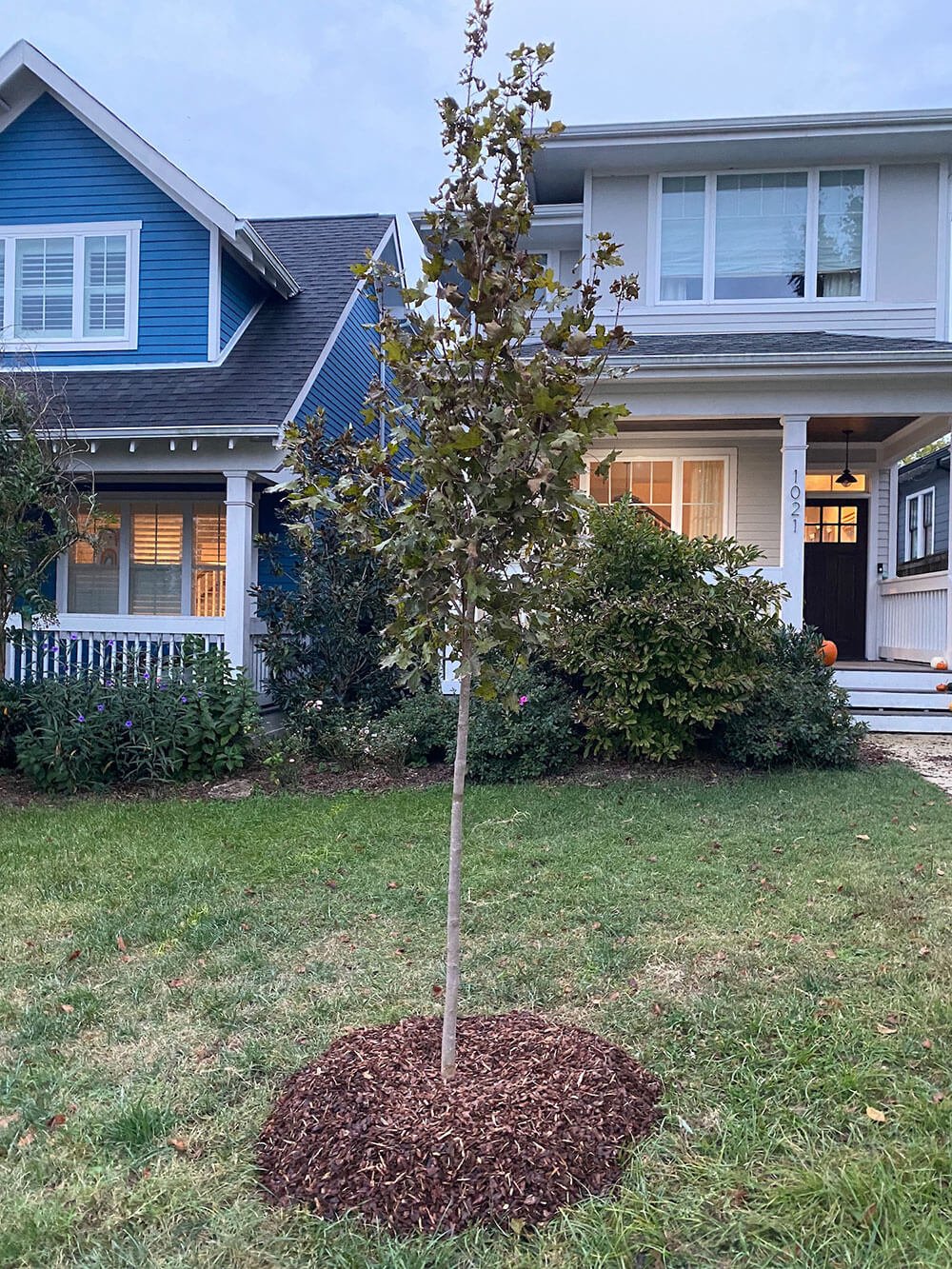DIY Winter Tree Care
When temperatures start to drop, your trees begin to prepare themselves for winter dormancy. Trees deploy natural strategies that allow them to survive the winter, such as losing their leaves, storing energy in their roots and slowing down growth. As tree stewards, we can support this process by implementing basic cold-weather maintenance to help them get through the coldest months of the year (and grow back strong in spring).
Here are some best practices homeowners should consider as winter begins:
Make sure they get enough water
Put mulch around the roots
Fertilize the soil
Wrap the trunks of young trees
Wrap young evergreen trees and shrubs
A newly planted tree will benefit from some TLC over the winter.
Best Tree Care Practices to Consider as Winter Begins
Prune Trees
Colder months are the best time to prune trees of all ages because the low temperatures inhibit bacteria or fungi from growing at the cut locations. Meanwhile, insects and pests won’t be around to infect or damage the open wounds. Removing weak branches will prevent them from snapping off during winter storms.
Trees should be pruned carefully, and no more than 25% of the canopy should be removed. Over-trimming a tree can result in too few leaves being produced in spring, while tree topping (cutting off all branch extensions from the tree’s trunk) is often fatal to a tree. If you’re unsure about pruning or your tree is too large to trim yourself, reach out to a certified arborist to keep your tree in the best condition.
Trees have natural strategies to ensure winter survival but homeowners can help the process along.
Winter Watering
Trees need water year-round, even when it’s cold out. A tree will need about half as much water in the winter as in summer, with fall and spring usually bringing in enough rainy days to keep them happy. Since trees will still be absorbing water during the cooler months, you should give them some water if it hasn’t rained or snowed for a long period and it isn’t freezing (temperatures above 40 degrees should be safe for watering).
Mulch The Roots
Autumn and winter are great times to apply mulch around your trees. Leaves fall from the branches when a tree goes dormant, and this yearly release of organic material builds the soil around trees, providing insulation and nutrients for the roots. Using the tree’s own leaves, wood chips or compost around the roots of the tree will help deliver nutrients over the cool months and into spring as the material breaks down slowly. Be careful not to pile mulch too high around the trunk (known as a mulch volcano) since this can keep the trunk and roots from getting enough oxygen, and cause further damage by trapping moisture and creating a habitat for pests and diseases.
Fertilize The Soil
Though trees were traditionally fertilized in spring, new research shows that fertilizing the soil around your tree in the late fall or early winter allows the plant to better absorb the nutrients over time and improve its root system before hot weather comes. Fertilizing now will provide a rich source of nutrients in the early spring when roots reawaken and the material has been sufficiently broken down over the winter. If you don’t apply mulch, you can purchase slow-release fertilizer pellets, which are designed to condition the soil and last throughout the winter. Try a liquid or quick-release solid fertilizer product when your tree is preparing for dormancy – this will help the roots make and store the energy they will need for the upcoming months.
Mulching, pruning and fertilizing your young tree can all be done during cold winter months.
Wrap The Trunks Of Young Trees
Trees in urban and suburban areas are often isolated and exposed to direct sunlight. For young trees in these positions, it may be important to wrap their trunks in burlap or specially designed paper or plastic material over winter for the first several years of their lives until a thick enough layer of bark develops. Young trees have thin bark, which can be damaged in winter conditions: the low temperatures will trigger dormancy in the tree, but the winter sun is lower in the sky and will shine on the tree trunks directly throughout the day, warming them up. This can result in cracks or freeze damage on the trunk when temperatures drop again in the evening. Young trees in shaded areas don’t need to be wrapped since they’re naturally protected from harsh sunlight.
Wrap Young Evergreen Trees
Young evergreen trees also benefit from being wrapped in burlap throughout the coldest months. Since evergreen trees like cedars and pines keep their leaves over the winter, young trees can be damaged by the winter sun from cycles of warming during the day and freezing overnight. A burlap wrapping also keeps young evergreen branches from being damaged by strong winter winds or by the weight of snow and ice.
Plant Trees in Fall And Winter
Remember – the fall and winter seasons offer the best times of year to plant a tree, as the cool months provide time for the roots to spread out before the tree devotes its energy to producing leaves and buds in the spring. If you’re thinking of planting a tree this year, check out the Nashville Tree Conservation Corps’ Tree Sale, ongoing from October to March. And for tips on tree care in every season, sign up for our newsletter to learn how you can help keep Nashville’s canopy full and healthy!



